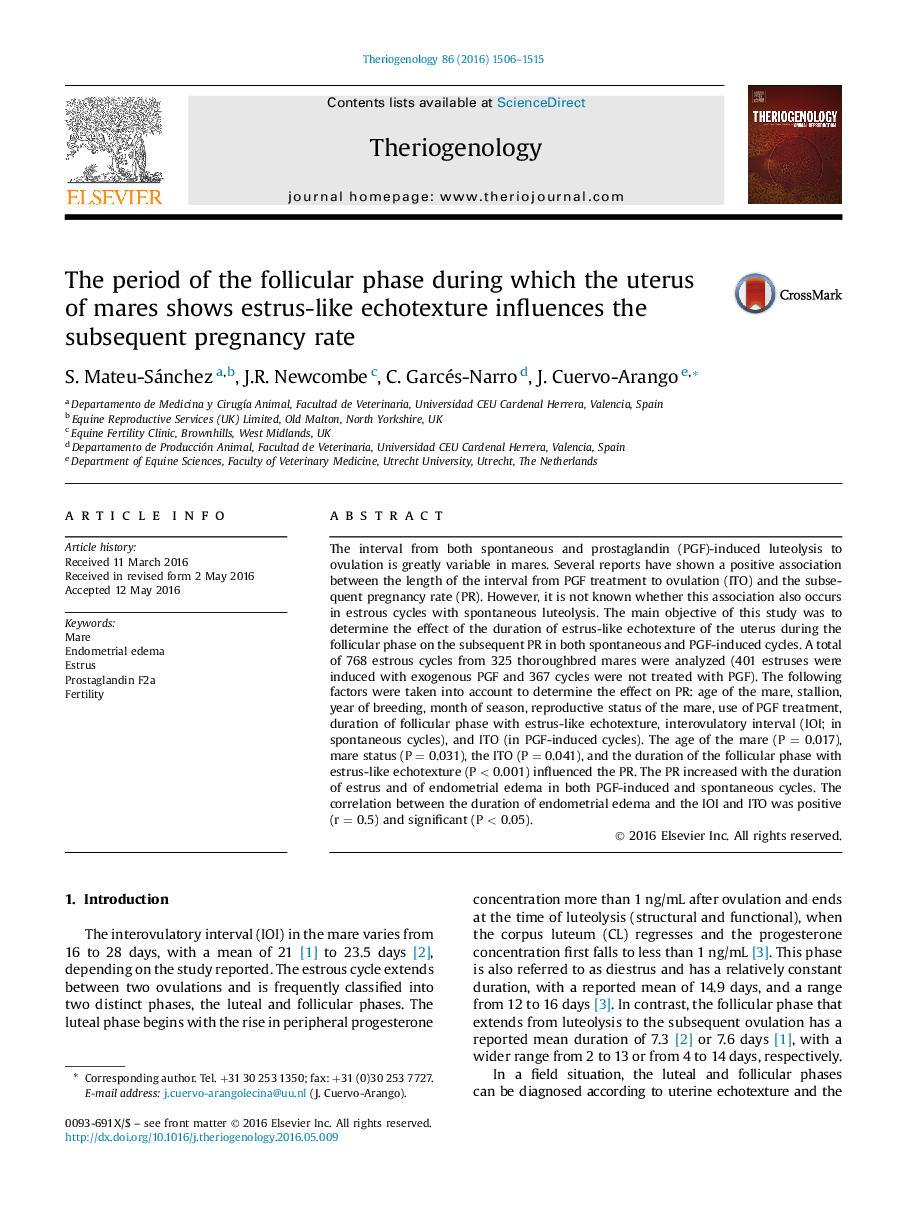| Article ID | Journal | Published Year | Pages | File Type |
|---|---|---|---|---|
| 2094688 | Theriogenology | 2016 | 10 Pages |
The interval from both spontaneous and prostaglandin (PGF)-induced luteolysis to ovulation is greatly variable in mares. Several reports have shown a positive association between the length of the interval from PGF treatment to ovulation (ITO) and the subsequent pregnancy rate (PR). However, it is not known whether this association also occurs in estrous cycles with spontaneous luteolysis. The main objective of this study was to determine the effect of the duration of estrus-like echotexture of the uterus during the follicular phase on the subsequent PR in both spontaneous and PGF-induced cycles. A total of 768 estrous cycles from 325 thoroughbred mares were analyzed (401 estruses were induced with exogenous PGF and 367 cycles were not treated with PGF). The following factors were taken into account to determine the effect on PR: age of the mare, stallion, year of breeding, month of season, reproductive status of the mare, use of PGF treatment, duration of follicular phase with estrus-like echotexture, interovulatory interval (IOI; in spontaneous cycles), and ITO (in PGF-induced cycles). The age of the mare (P = 0.017), mare status (P = 0.031), the ITO (P = 0.041), and the duration of the follicular phase with estrus-like echotexture (P < 0.001) influenced the PR. The PR increased with the duration of estrus and of endometrial edema in both PGF-induced and spontaneous cycles. The correlation between the duration of endometrial edema and the IOI and ITO was positive (r = 0.5) and significant (P < 0.05).
